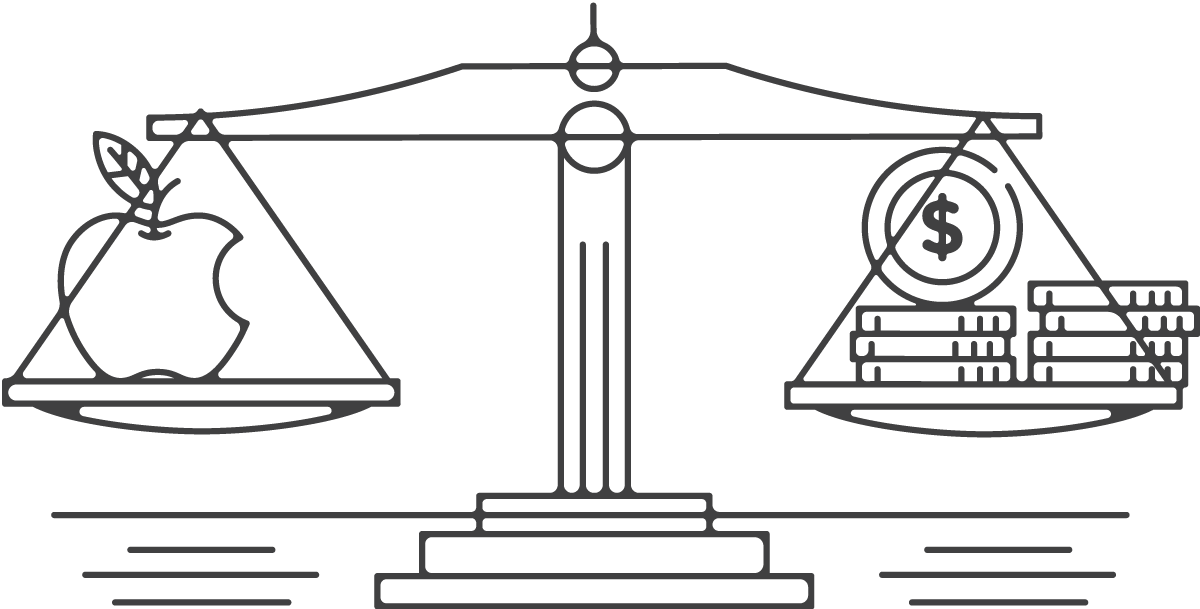We all make purchases. Whether buying goods, services, or experiences, we are all faced with making purchase decisions. These decisions to buy can be as frequent as daily or could be larger decisions we take months to make. No matter the timing, two factors always play a role in all purchases: price and value.
Price is what you pay, value is what you get.
— Warren Buffett
Warren Buffett is famous for his talent in reducing complexities into simple ideas. This is precisely what has made him such an incredible investor who has consistently out-performed the market throughout the decades. Understanding that price and value are different is key to unlocking the success of your business. This brings two major aspects into view. How should you price your offering and what is the value of your offering?
Price
I believe pricing is one of the major cornerstones for any business. Improper pricing can lead to a failing business that suffers a slow death, with a stressed out owner and a non-motivated team. On the other hand, pricing can rejuvenate a business and help it create massive momentum.
First I need to tell you that I’m not a fan of cost-plus pricing. I’m also not a fan of hourly pricing. These two pricing methods are easy and base the entire price on the actual cost to the business. This is simply ridiculous and not how we typically buy almost anything. Whether an apple at the grocery store or this Apple MacBook I’m typing on, we don’t look to see just how much the apple cost to grow, harvest, and transport or see how much the component costs in your computer or phone. So why should you sell your offering in a way that no one buys? Same goes for hourly. It creates conflicts of interest and isn’t focused on the solution being purchased. Why settle for poor pricing paradigms just because they are easy? Pricing is one of the most powerful tools your business has to increase perceived value and the overall customer experience of your brand.
Buffett boils it down to “price is what you pay” and he is completely correct. It’s not the cost. The price stands alone, it is just the amount you pay for a product or service. This price however can be completely detached from the cost. It can be a premium price or an economical price. It can have a lot of zeros or very little. It can be one set price or it can be an on-going monthly price. The price is simply what you pay for something that you value. The price is also a reflection of this value.

Value
When you understand pricing, it becomes obvious that price is closely connected to value beyond just cost. In a successful purchase, the value that the business places on the offering is different than that which the buyer assigns it. This may sound counterintuitive, but when the value the buyer places on the offering is higher than the stated price then they are happy to buy. Conversely, if the value is lower than the price placed then the buyer will be reluctant to be sold to.
“Value is what you get” is a focused essence of what we truly receive when we purchase something. No matter the price, our perception of the value we receive is what we truly extract from the transaction. Whether that’s the lunch we bought, new home, or movie ticket, each instance of paying a price we evaluate separately based on the perceived value. This perception takes into consideration the fundamental aspects of the purchase like its functionality, quality, taste, enjoyment, etc. — then this is enhanced by our irrational perception. This is led by our emotions that then increase or decrease the perceived value accordingly. Did that lunch make you feel good or did it leave you feeling gross. Does your home make you feel independent and mature? Or did you buy a lemon and now you feel like a sucker? Was the movie entertaining? Were you comfortable? Was the experience memorable? The many aspects that our complete senses absorb will lead us to our final perceived value of the purchase. This is “evaluated” each time as we then tell ourselves if we feel good or bad about the purchase.
Similar to how we assign meaning to brands, we assign value to offerings. The price is considered before and after to see if we thought it was “worth it.” The price that we paid for the value we received, both very subjective and can mean many different things to many different people.
Considering both price and value, we see that brand is a central role. It not only communicates the value of the brand and offering through positioning and framing, but it also sets the expectation. Brand can increase the perception of value before the purchase and increase the value after by the buyer being happy to be part of the brand (i.e. to have a Mercedes, to have tried that wine, or been to In-N-Out). The perception (brand) leads the buyer to a higher evaluation which will make them more willing to pay a higher price.
Price is very much a signal of value based on the context of the offering. A buyer may value a “good deal” so a lower price might be more valuable to them. Another buyer might enjoy luxury goods so they value a few extra zeros at the end of the price. This isn’t to say pricing is as easy as just placing a number, but it’s about understanding your brand and its audience. This will then give you insights into what they value. This should then guide the brand and the decisions regarding the experience of the brand — like price.

